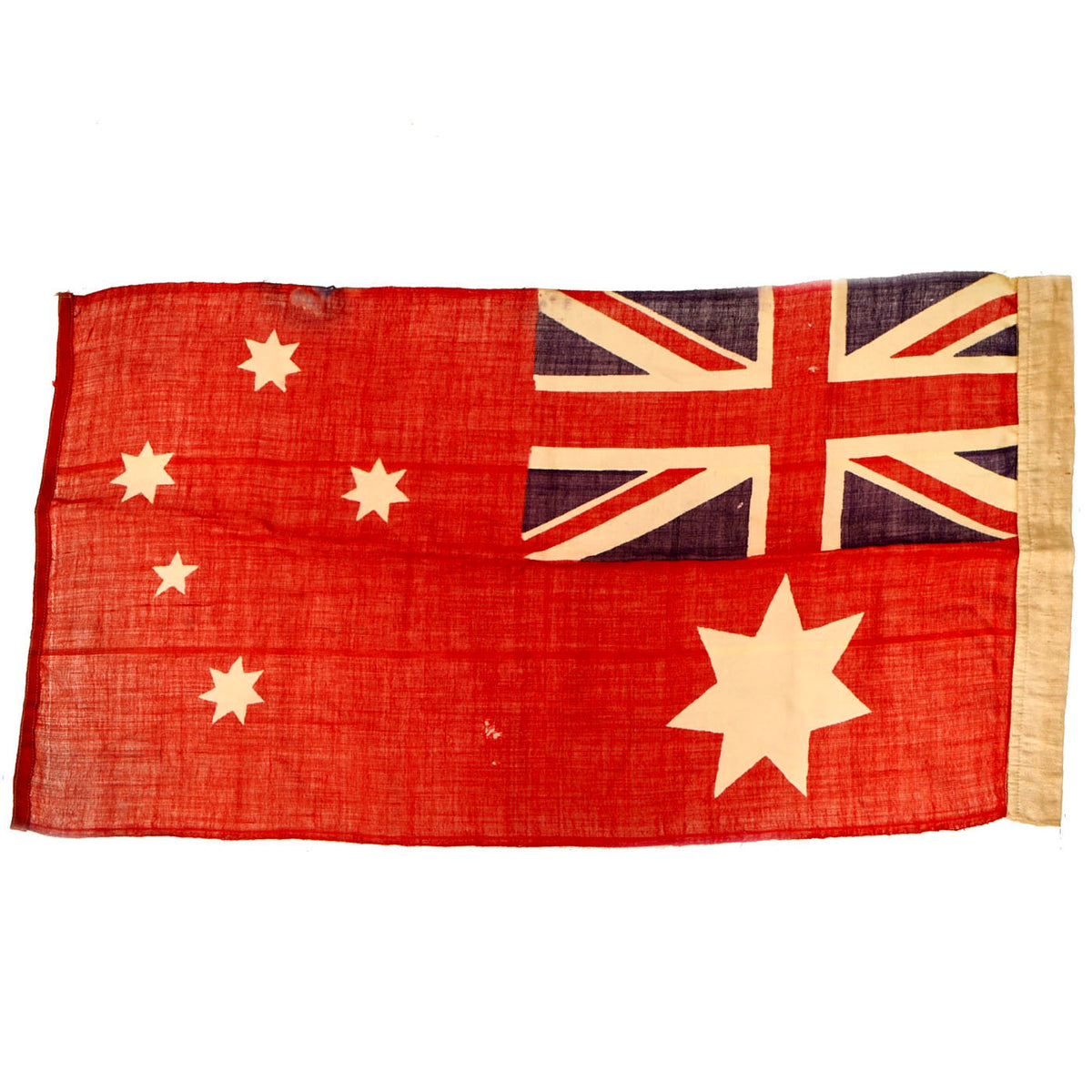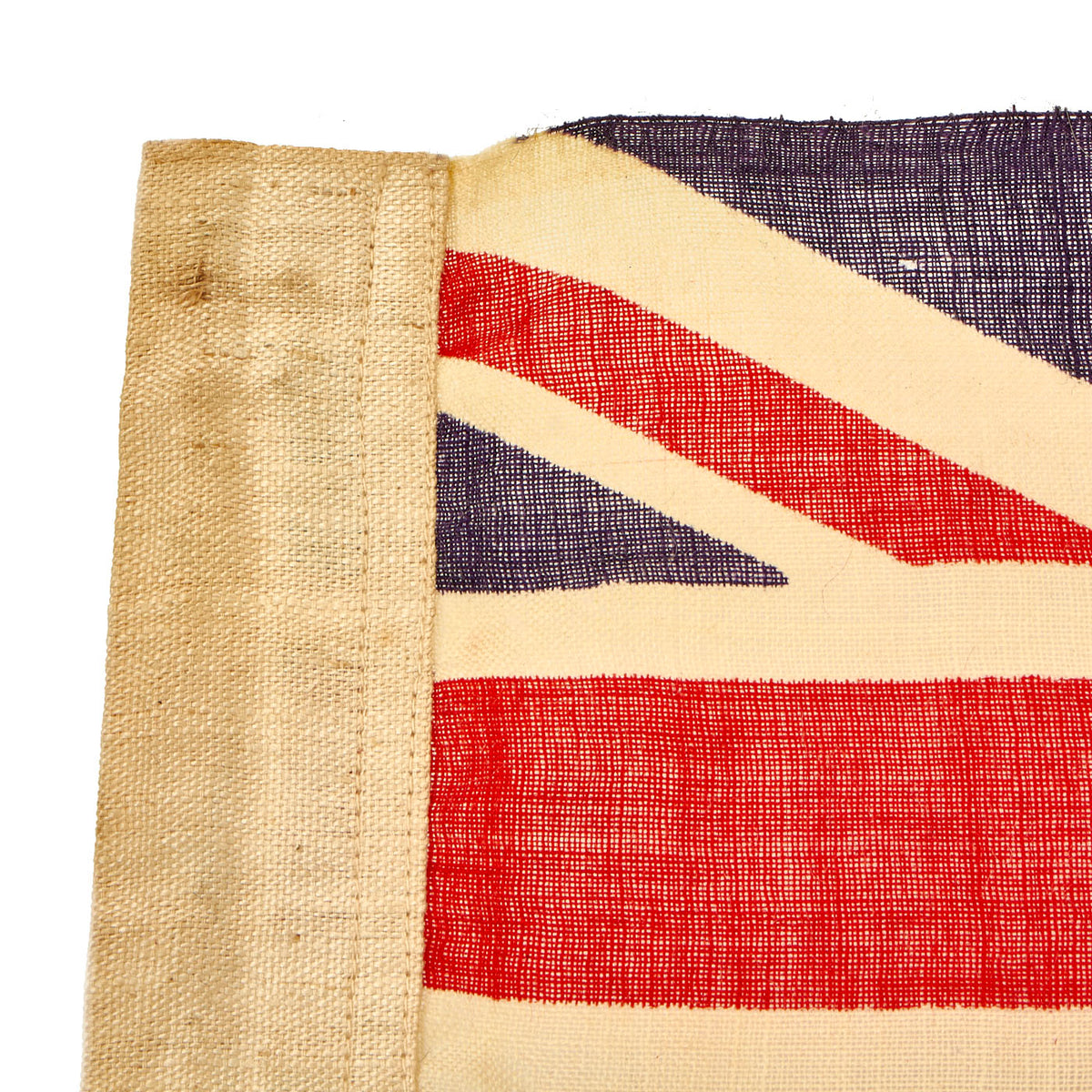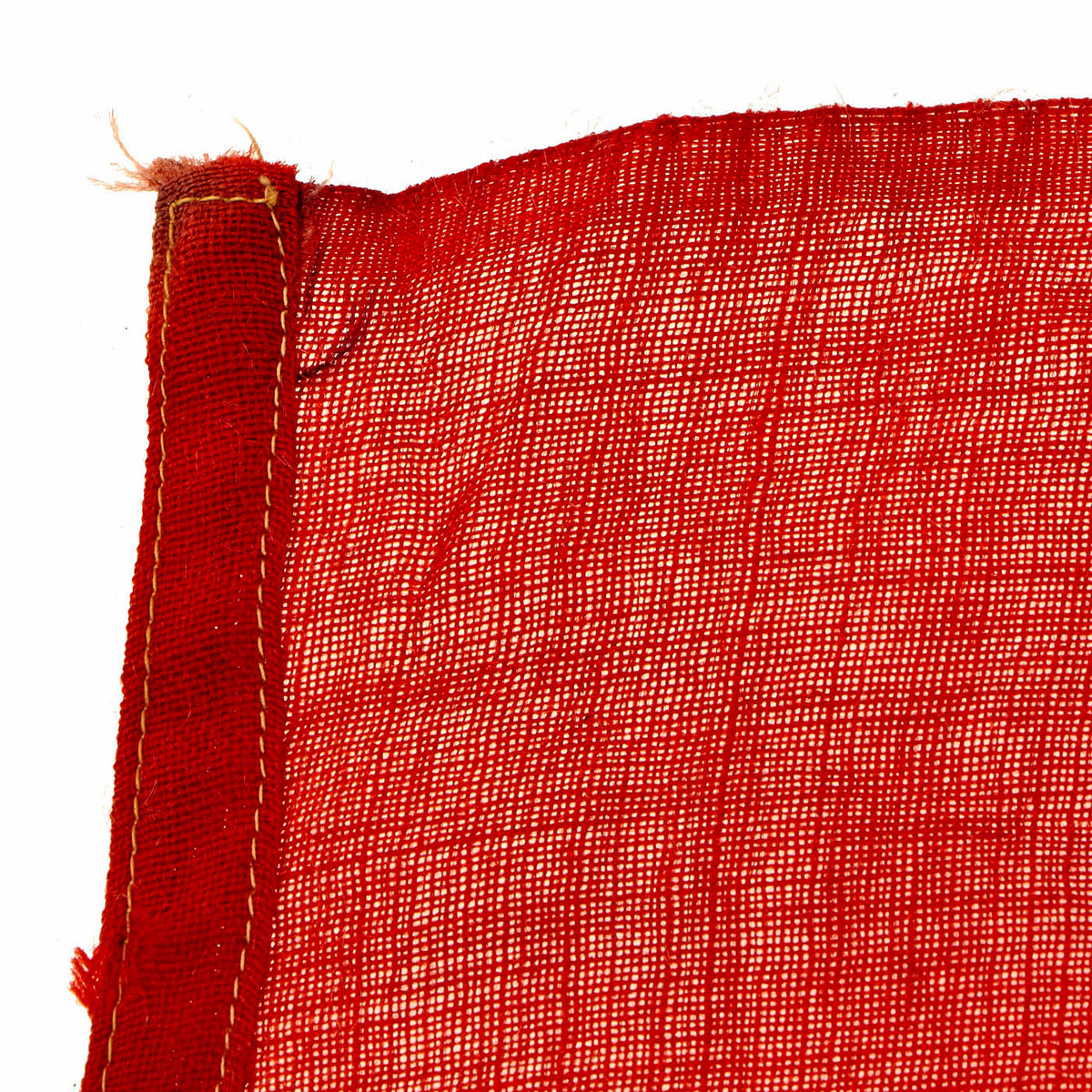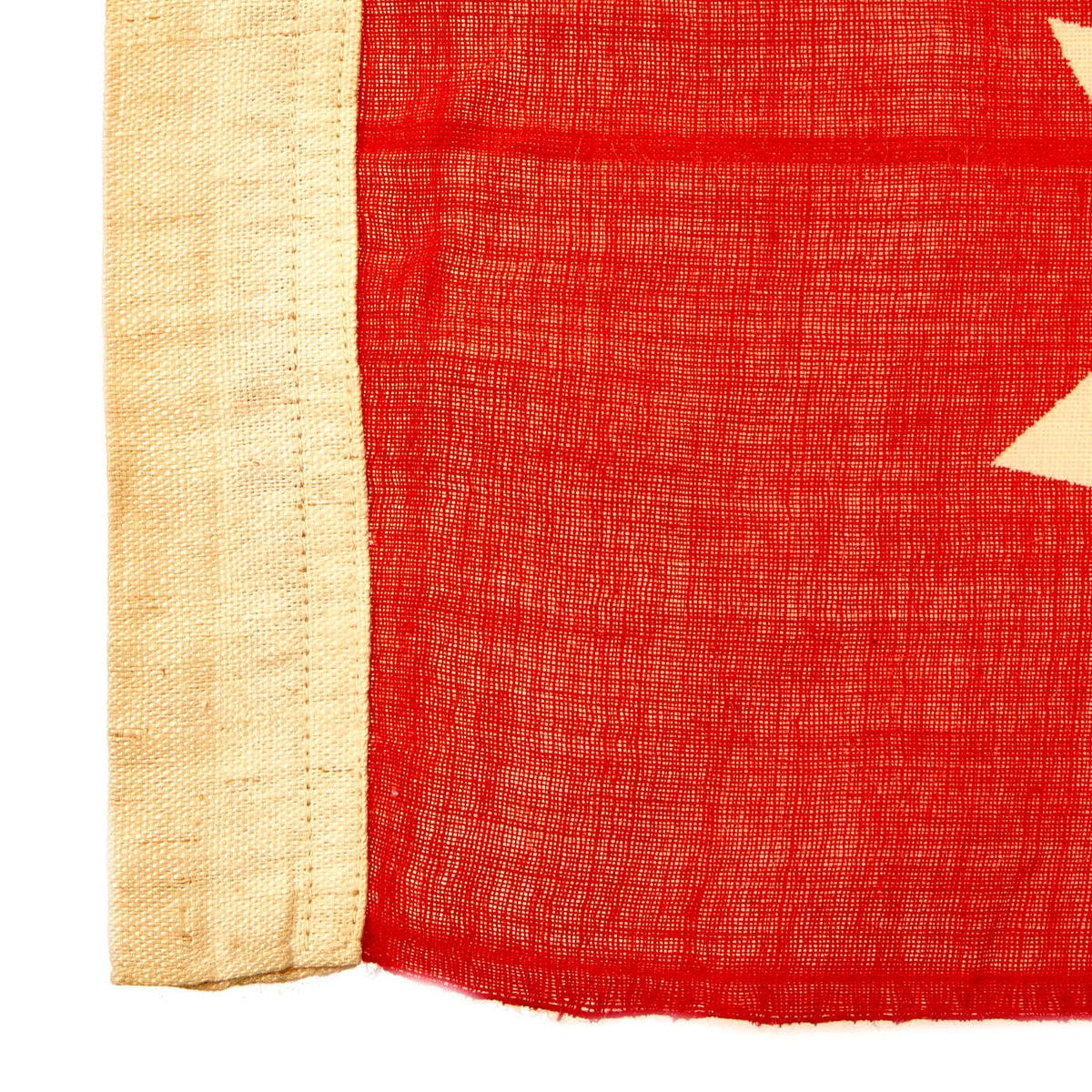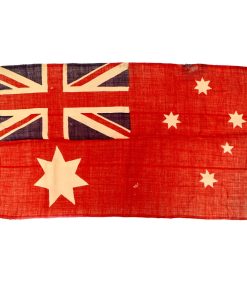Original Australia WWII Australian Naval Red Civil Ensign – 18″ x 33 ½” Original Items
$ 295,00 $ 118,00
Original Item: Only One Available. The Australian Red Ensign is the civil ensign of Australia, the flag of nationality flown by Australian registered ships. It is a red version of the national flag, which is mainly blue. Both flags resulted from the Commonwealth Government’s 1901 Federal Flag Design Competition which required two entries: an ensign for Commonwealth Government use and another for the merchant navy. The winning design for the merchant ensign was based on the traditional British Red Ensign and featured the Southern Cross and Commonwealth Star.
This smaller flag measures 18″ x 33 ½” and is offered in wonderful condition. The heavy canvas construction is dyed with a separate 1 ½” white canvas heading with a slot for attachment via polearm or rope. There is minor wear and a few scattered holes present, evident signs of actually being flown for service.
A wonderful example more than ready for display.
History
The Commonwealth Government ran the Federal Flag Design Competition in 1901 to find two designs for Australian flags: one for official Commonwealth Government use and another for the merchant navy. After being submitted to King Edward VII for approval the competition-winning design which featured a southern cross with nine, eight, seven, six and five points respectively was standardized by the British Admiralty with the number of points on the four biggest stars of the southern cross set to seven, ostensibly to improve ease of manufacture. The original variety of points was an indication of the relative brightness of each star as it appeared in the night sky. In 1908, the current Commonwealth star of seven points replaced the earlier six-pointed star.
In the decades following federation the Red Ensign was the pre-eminent flag in use by private citizens on land. This was largely due to the Commonwealth government, assisted by flag suppliers, discouraging use of the Commonwealth Blue Ensign, now known as the Australian National Flag, by the general public. By traditional British understanding, the Blue Ensign was reserved for official government use although the Red Ensign was nevertheless still in military circulation until after the 1953 legislation, meaning the 1st and 2nd Australian Imperial Forces served under both the blue and red versions. State and local governments, private organizations and individuals were expected to use the Red Ensign.
In the 1920s there was debate over whether the Blue Ensign was reserved for Commonwealth buildings only, culminating in a 1924 agreement that the Union Flag should take precedence as the National Flag and that state and local governments were henceforth able to use the Blue Ensign. A memo from the Prime Minister’s Department dated 6 March 1939 states that: “the Red Ensign is the flag to be flown by the public generally” and the federal government policy was “The flying of the Commonwealth Blue Ensign is reserved for Commonwealth Government use but there is no reservation in the case of the Commonwealth Merchant Flag, or Red Ensign”.
In 1940 the Victorian government passed legislation allowing schools to purchase blue ensigns. The following year prime minister Robert Menzies issued a media release recommending that the Blue Ensign be flown at schools, government buildings and by private citizens and continued use of the Red Ensign by merchant ships, providing it was done so respectfully. Prime Minister Ben Chifley issued a similar statement in 1947.
Despite executive branch proclamations as to the respective roles of the two red, white and blue ensigns there remained some confusion until the Flags Act 1953 declared the Blue Ensign to be the Australian National Flag, leaving the Australian Red Ensign to its status as the civil ensign.
Fast Shipping with Professional Packaging
Thanks to our longstanding association with UPS FedEx DHL, and other major international carriers, we are able to provide a range of shipping options. Our warehouse staff is expertly trained and will wrap your products according to our exact and precise specifications. Prior to shipping, your goods will be thoroughly examined and securely secured. We ship to thousands clients each day across multiple countries. This shows how we're dedicated to be the largest retailer on the internet. Warehouses and distribution centres can be located throughout Europe as well as the USA.
Note: Orders with more than one item will be assigned a processing date depending on the item.
Before shipping before shipping, we'll conduct a thorough inspection of the items you have ordered. Today, the majority of orders will be delivered within 48 hours. The delivery time will be between 3-7 days.
Returns
The stock is dynamic and we cannot completely manage it because multiple stakeholders are involved, including our factory and warehouse. So the actual stock may alter at any time. It's possible that you may not receive your order once the order has been made.
Our policy is valid for a period of 30 days. If you don't receive the product within 30 days, we are not able to issue a refund or an exchange.
You can only return an item if it is unused and in the same state as the day you received it. You must have the item in its original packaging.
Related products
Uncategorized
Armored Burgonet Helmet & Polearm from Scottish Castle Leith Hall Circa 1700 Original Items
Uncategorized
Uncategorized
Uncategorized
Uncategorized
Uncategorized
Uncategorized
Uncategorized
Uncategorized
Uncategorized
Uncategorized
Uncategorized
Uncategorized
Uncategorized
Uncategorized
Uncategorized

